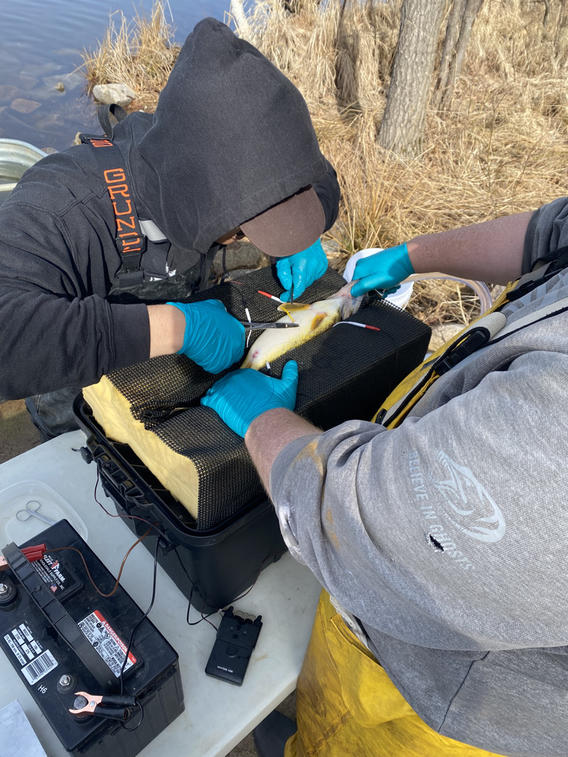
By Ben Vasquez, MW CASC Graduate Student
I have always been fascinated by walleye. I have vivid memories of walking barefoot along Michigan’s Southern Lake Leelanau at night, my headlamp accidentally scaring walleye as they stalked the shallows for unsuspecting prey like spottail shiners. Their eyes, glowing from reflective tissue known as tapetum lucidum, filled me with wonder and awe. What purpose did these glowing eyes have and why did walleye only come to shallow waters at night?
Those glowing eyes to which walleye owe their common name increase vision in low-light conditions and provide context to their ecological niche. Walleye are coolwater fish that prefer slightly turbid or darker waters. Presumably, lakes and rivers that have these attributes are more likely to have good walleye fisheries. This understanding of walleye habitat preferences has been adapted into a conceptual model, or mental representation, of preferred temperature and optical (light or illumination) walleye habitat. Thermal-optical habitat area, or TOHA, describes temperature and subsurface illumination where walleye growth and foraging is optimal and has been effective at explaining trends in some walleye populations.
Since temperature and light levels are crucial to successful walleye fishing, it’s no surprise the TOHA concept holds some water (no pun intended). When I attended Northern Michigan University as an undergraduate, I always caught more walleye as the sun was starting to set or at night. These twilight windows brought walleye nearshore to feed while they had the “upper hand” in reduced light levels. As I began to fish from a boat, finding both “stained” water and correct temperatures was equally important. On Lake Saint Clair and the Detroit River, I’d try to find mud lines or slicks that had formed by the currents of the Great Lakes. These walls of stained water acted as optimal foraging habitat for walleye during mid-day in otherwise crystal-clear water. In early spring and late fall, finding these lower clarity waters that were slightly warmer than the rest of the lake guaranteed successful walleye catches.
I’ve probably spent too much time thinking about walleye, but that has led me to where I am today. My project team is investigating walleye habitat use in relation to light levels and temperature to inform the TOHA conceptual model. Current research indicates that TOHA is declining in the upper Midwest at least in part due to climate change and dreissenid mussels, which increase water clarity. Following the TOHA concept, we should expect some walleye fisheries to change over time. However, even though TOHA is linked with walleye productivity, we’re still not sure if walleye use or preferentially occupy TOHA.
Joining the Midwest Climate Adaptation Science Center (CASC) community has given me the opportunity to advance my career as a fisheries researcher and pursue my lifelong passion (or, addiction) of understanding walleye ecology. Our goal is to empirically evaluate walleye habitat use in relation to TOHA. We have tagged over 150 walleye in three northern Wisconsin lakes with tags that record temperature and depth. After equating the depth data with light data recorded on each lake, we will have a window into walleye temperature and light-at-depth use and be able to answer our research questions regarding TOHA.
I’m excited to see what the future holds with this project, and I can’t thank the Midwest CASC enough for letting me be a part of their team!

Ben Vasquez (he/his) is currently pursuing a master’s degree in Natural Resources at the University of Wisconsin-Stevens Point. His thesis research applies depth and temperature sensors to evaluate walleye habitat use in three northern Wisconsin lakes.
